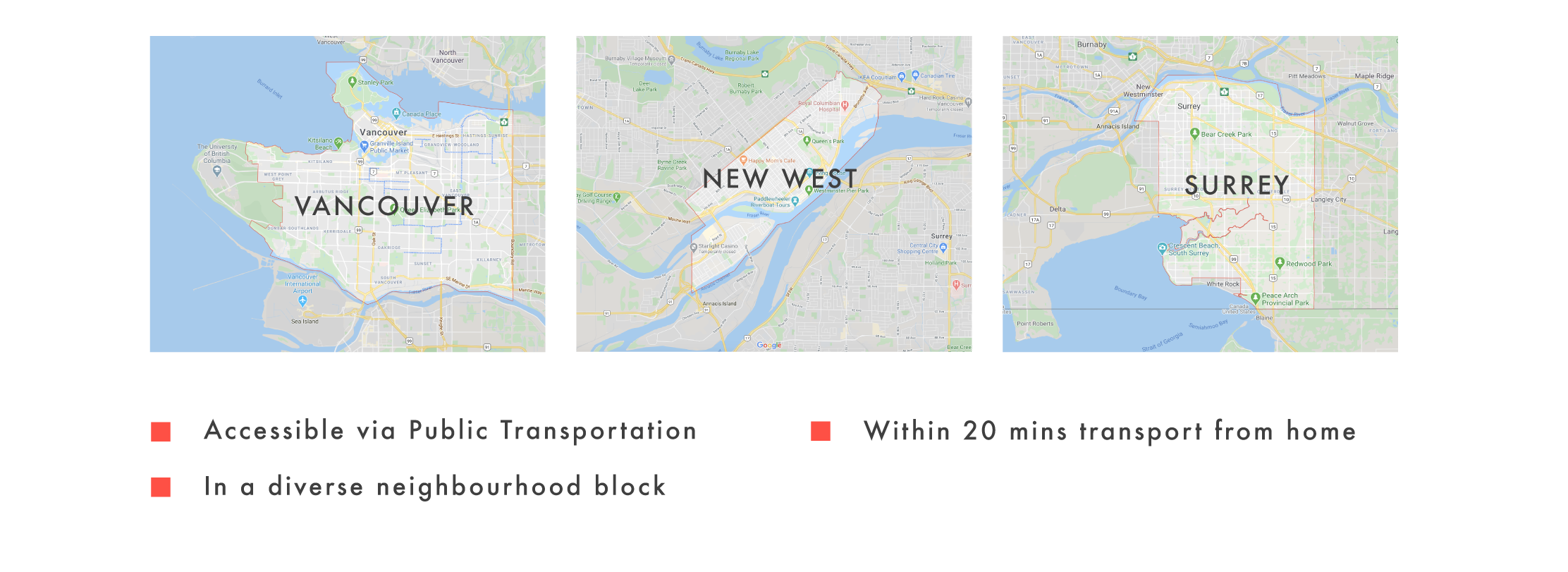

💖 Special thanks to City Staff at Vancouver City Studio and business mentors at Radius Innovation Hub who provided space for academia, industry and local government to come together.
The Vision
Macrame Salon is a for-profit social enterprise beauty salon designed to support immigrant beauticians with home-based beauty services looking to grow their business in a commercial space.
In collaboration with Vancouver’s municipal government and immigration services, Macrame Salon is a grassroots idea that was created by 4 Vancouverites to empower and support local immigrant entrepreneurs who are in the beauty profession.
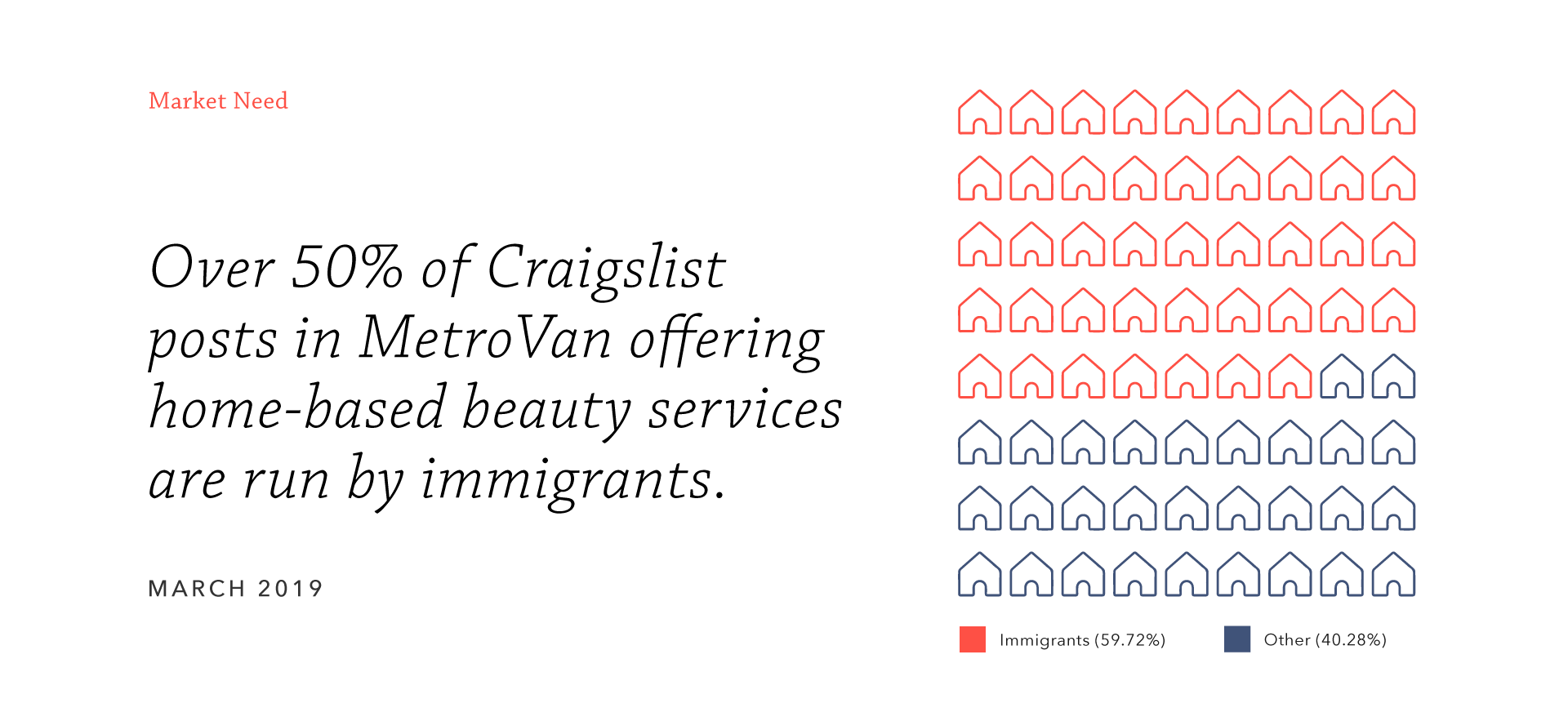
Why Macrame Salon
Social & Economic Resilience
There is a large user base today on Craigslist offering beauty services from their homes. Many of whom are female immigrants that run beauty services as a side hustle hoping to one day turn their passions into full-time work.
With almost 5000 hairstylists openings (2017-2027) and over 1500 other beautician openings (2015-2025) expected in BC, there is an opportunity to leverage the talents and skills of immigrant beauticians.
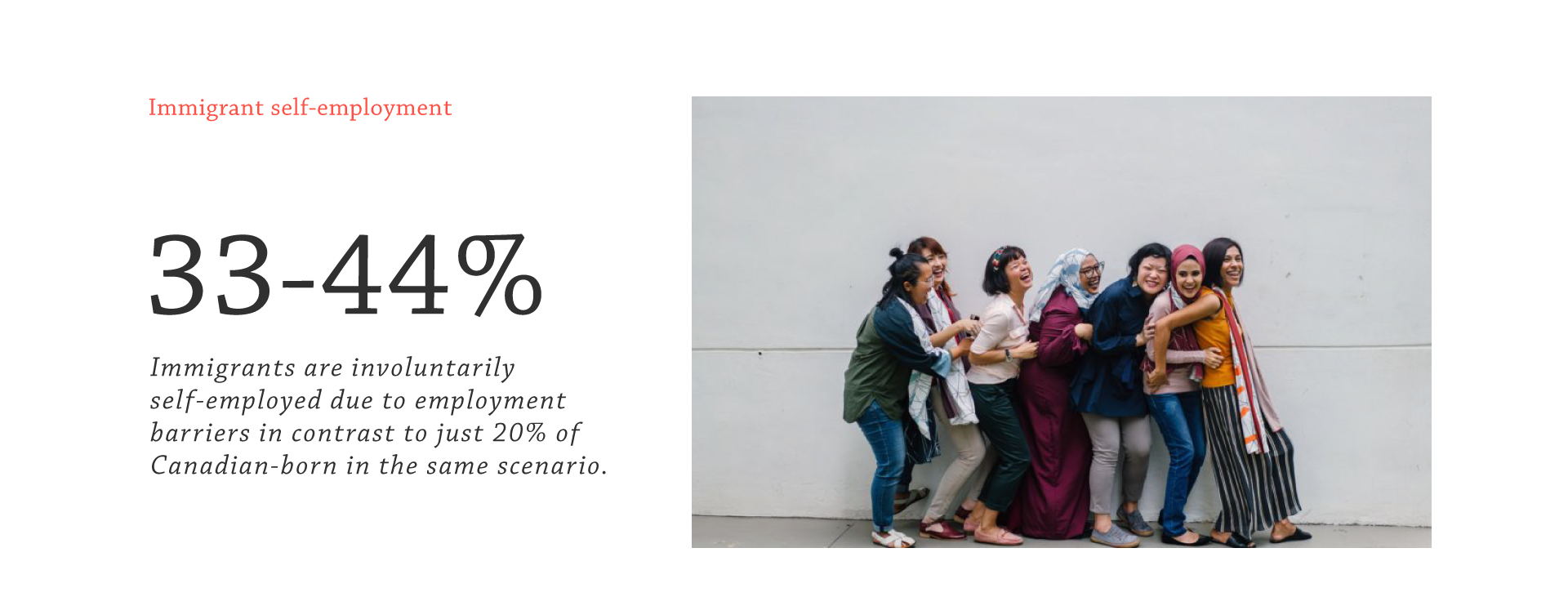
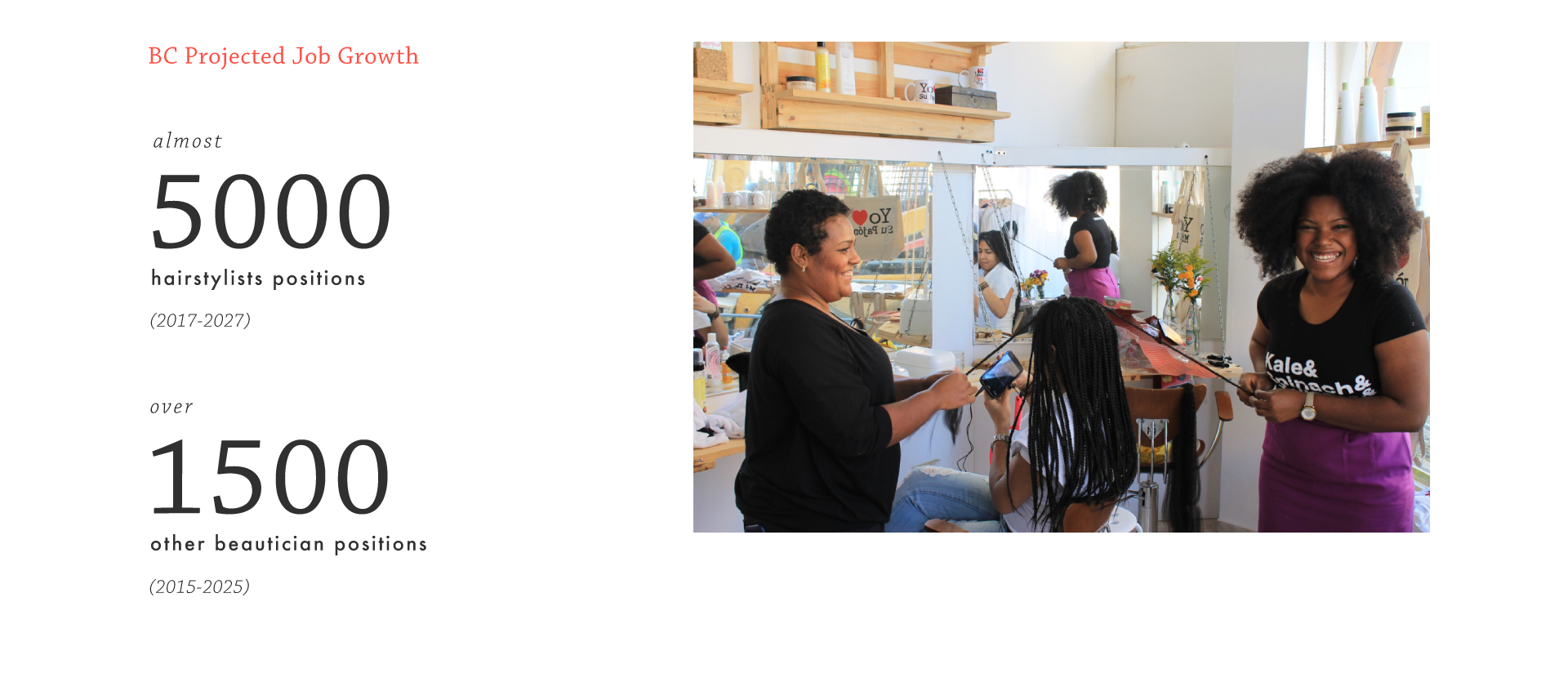
The Struggle for Meaningful Work
The beauticians expressed wanting to be their own bosses, but found it hard to turn their side hustles into a full-time job. They wanted to have more clients and grow their business, but their homes could not sustain growth.
On the flip side, there are financial risks of moving into a commercial salon space because there is no certainty they would get enough clients to break even and make profit from their investment.

Value Proposition
Be your own boss in our space.
Macrame Salon aims to help the beauticians de-risk the step to growing their business. Beauticians are their own boss rather than one of our employees. We simply provide the space for them to keep doing what they love to do while we take care of the rest.
They can rent a chair or private room for below market value, while joining a rich and supportive community of diverse backgrounds as they grow their brand and credibility.
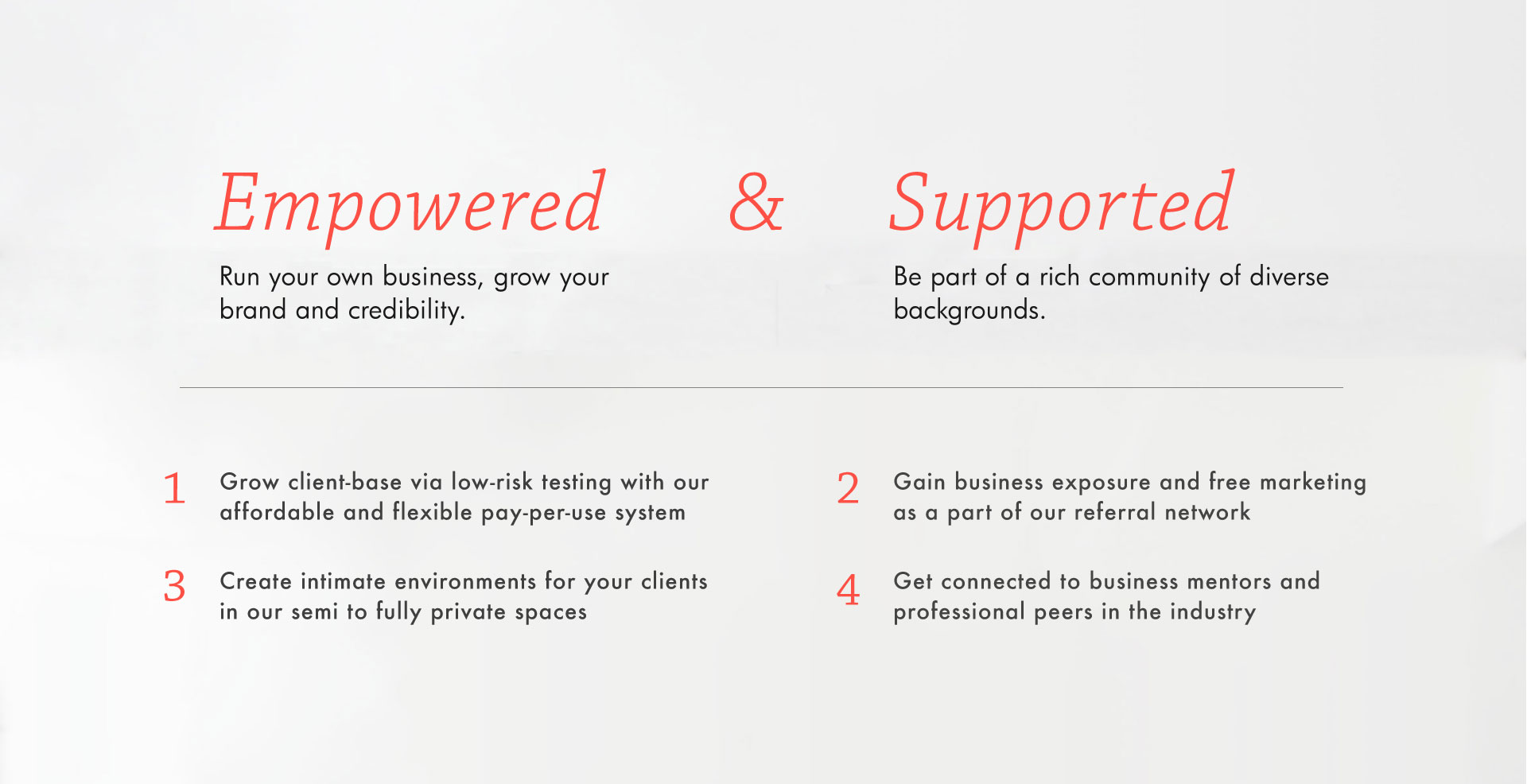
Impact on the Community
Macrame Salon’s impact has a down stream effect on social and economic inclusion for these beauticians who experience barriers to employment. It aims to contribute to the diversification of the local economy by supporting diverse income avenues.
It specifically aims to connect seasoned immigrants and newcomers with beauty skills thus encouraging a space where they can receive support and mentorship.
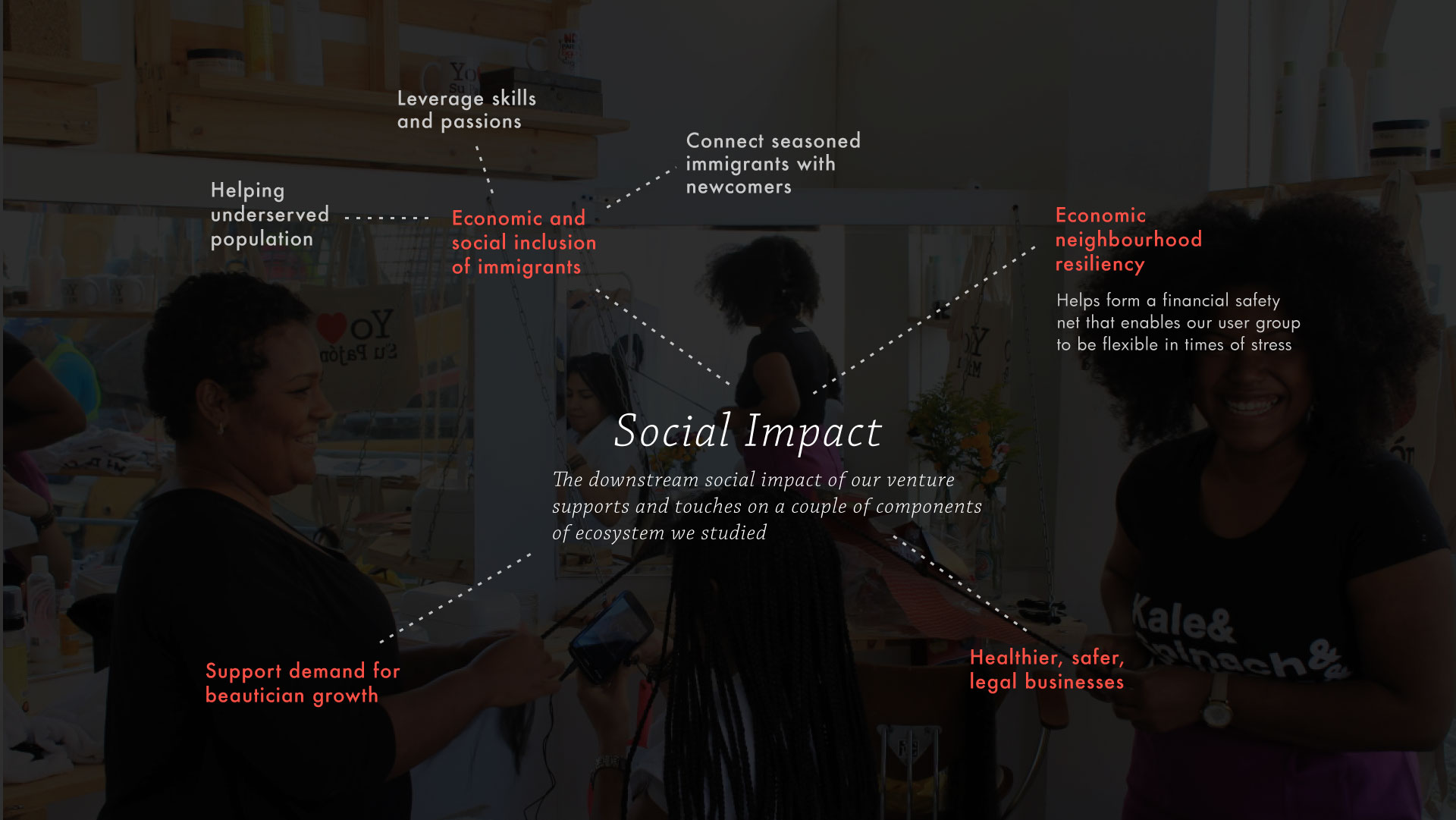
Stakeholders + Strategic Partnerships
Connecting Government, Industry + Community
My teammates and I interviewed approximately 40 people throughout the lower mainland: 12 beauty-service industry specific; 17 Restaurant owners, tailor service providers, artisans, artists, Etsy sellers; and 11 Immigration services, entrepreneur programs, non-profits, VPL, City of Vancouver experts.
This helped us better understand the needs and how we could position new value that could help align different stakeholder needs.

Aligning with City Goals
According to Vancouver Immigration Partnership section 3.13 and 3.16, Macrame Salon could help connect immigrant and refugee entrepreneurs to business training and employment by increasing these opportunities for immigrants to leverage their existing skills with meaningful work.
At the core of Macrame Salon is helping people find meaningful work while being able to provide for themselves and their families.
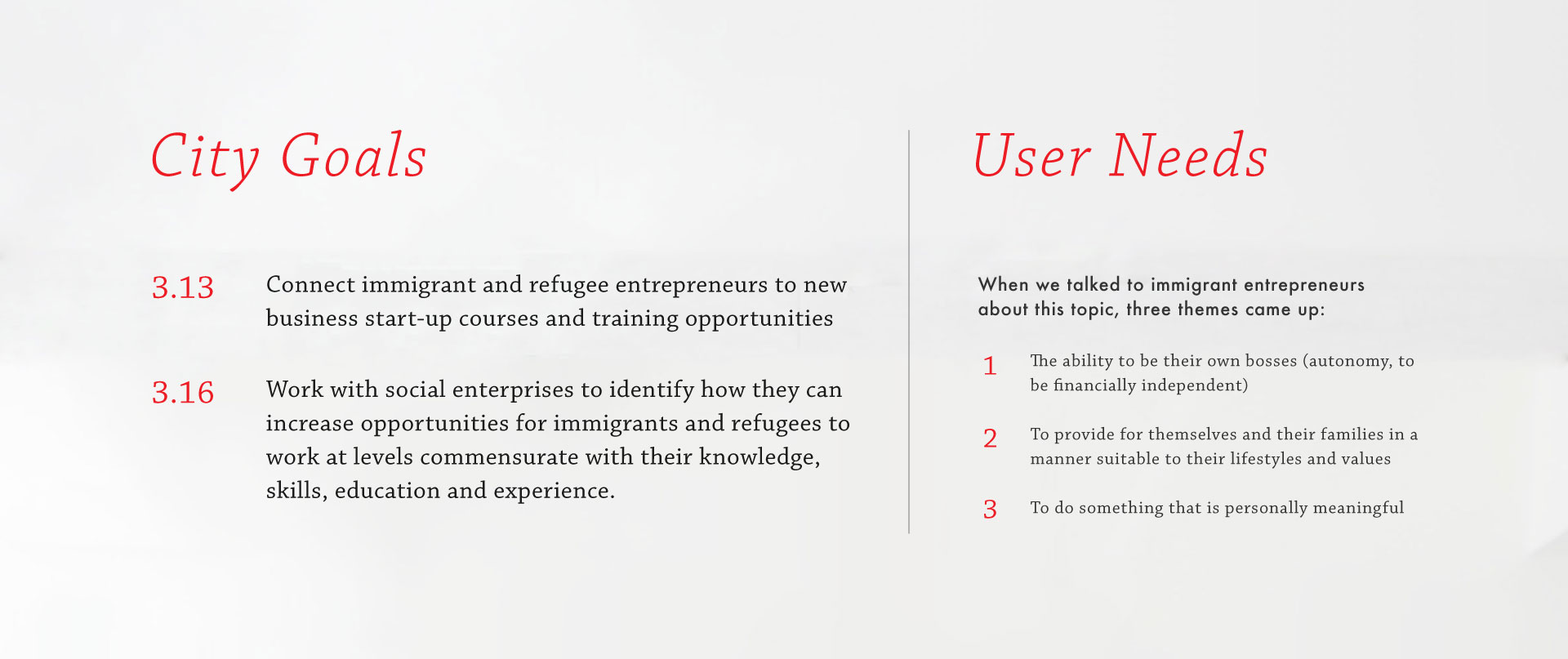
Community Response to Macrame Salon
Macrame Salon received much interest and excitement at Hubbub #12 Vancouver City Hall – so much so that it placed first place at the event among 12 other projects.
Radius Innovation Hub offered us $2000 if we chose to take our idea to the next level – we could test it in a real salon space which we could rent after hours, in a mall space or a pop-up store. A local bank also approached us about a funding opportunity. Moving forward we would seek out more funding from multiple sources.

The Backstory
The City as my Classroom and Playground
I’ve lived in Vancouver for most of my life, and can easily navigate the streets and shops in and around the city, but working on this project helped me see the city in a way that I hadn’t before: the parts of the city within peoples’ homes where they live and make a living.
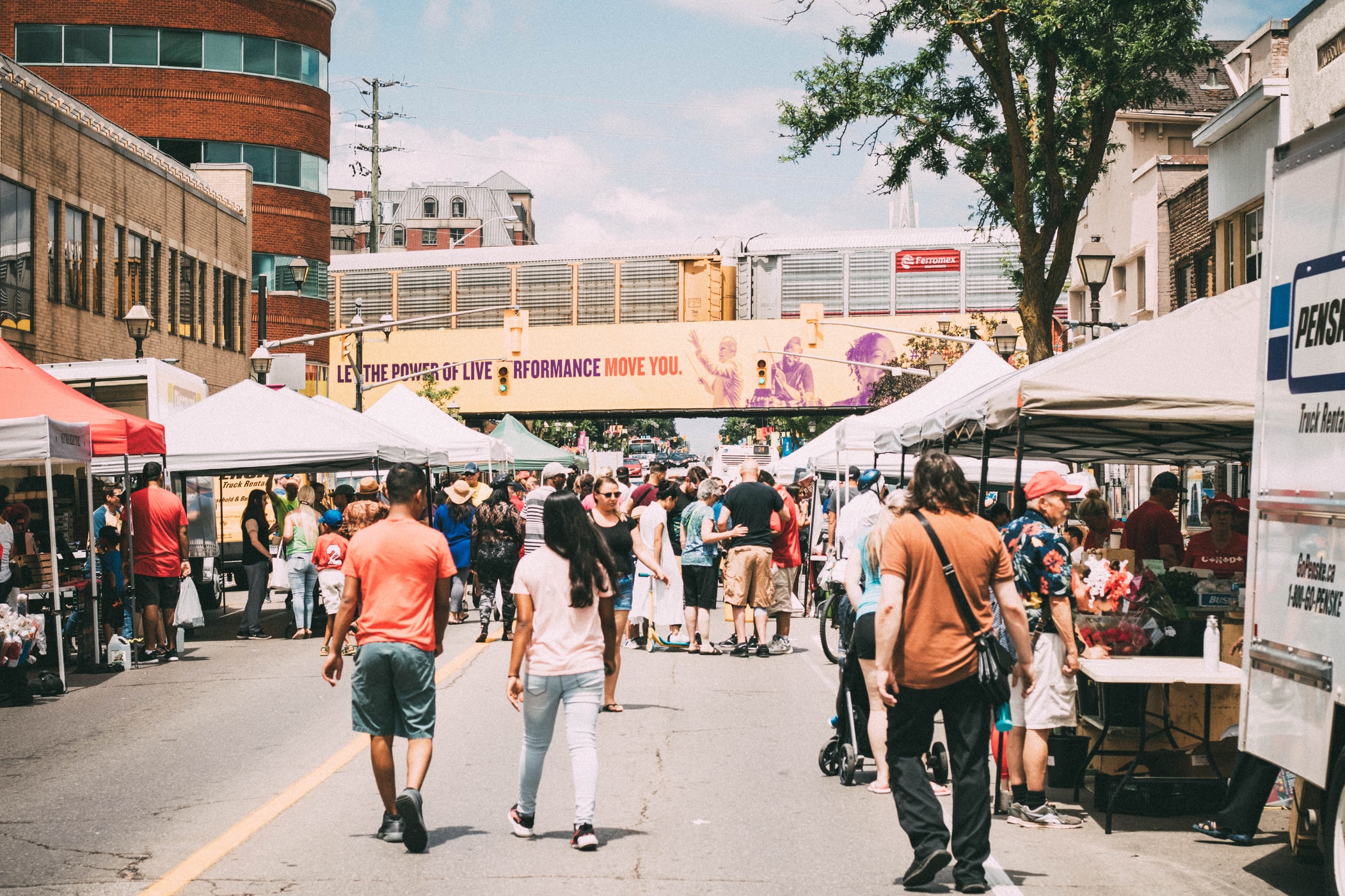
A project that began between Local Government and Two Universities in Vancouver.
I collaborated with Vancouver City Staff and ventured into the community with a grassroots mission. In a cohort of 20 students from UBC and SFU, I worked with 3 other students in Health Sciences and Criminology. With my studies in psychology and design, we were a small yet diverse team.
Mentors from City Studio Vancouver and SFU Radius Social Innovation Hub guided us through the project and provided us the time and space we needed to nurture and test our ideas.
The Brief: Design for Neighborhood Resilience
Vancouver City is a part of the 100 Resilient Cities initiative that aims to build cities that can quickly adapt to social, economic and environmental changes. The city appointed a Vancouver Chief Resilient Officer in 2017 whose work focuses on natural disasters and ‘elevating the voices of underrepresented groups’ (City Launches Resilient Vancouver Strategy).
CityStudio Vancouver provided a broad theme on ‘Neighborhood Resilience’ for each team to investigate and explore for themselves the areas of sustainability they wanted to design for.
The Strategy
Defining ‘Neighborhood Resilience’
Neighborhood resilience can be composed of social, economic and environmental factors, so we captured and group our research and ideas while taking into consideration these components of the brief.
Through multiple rounds of preliminary research and thoughtful discussions, my teammates and I decided to unite around the project based on our shared identities: second generation immigrants, and our values: self-sufficiency and empowerment for immigrants and newcomers who wish to start or grow their small businesses.

Organizing information as a team helped us understand how government, non-profits and other institutions currently play a role in the following spaces: low-income families, entrepreneurs and newcomers, as well as the gap that exists in the solution landscape today.
Need Finding
My teammates and I interviewed people across Vancouver, Surrey and Richmond. We cold called and visited small business owners at their stores and homes, and connected with staff who were experts in immigration and entrepreneurship.
12 beauty-service industry specific.
17 Restaurant owners, tailor service providers, artisans, artists, Etsy sellers.
11 in Immigration services, entrepreneur programs, non-profits, VPL, City of Vancouver.
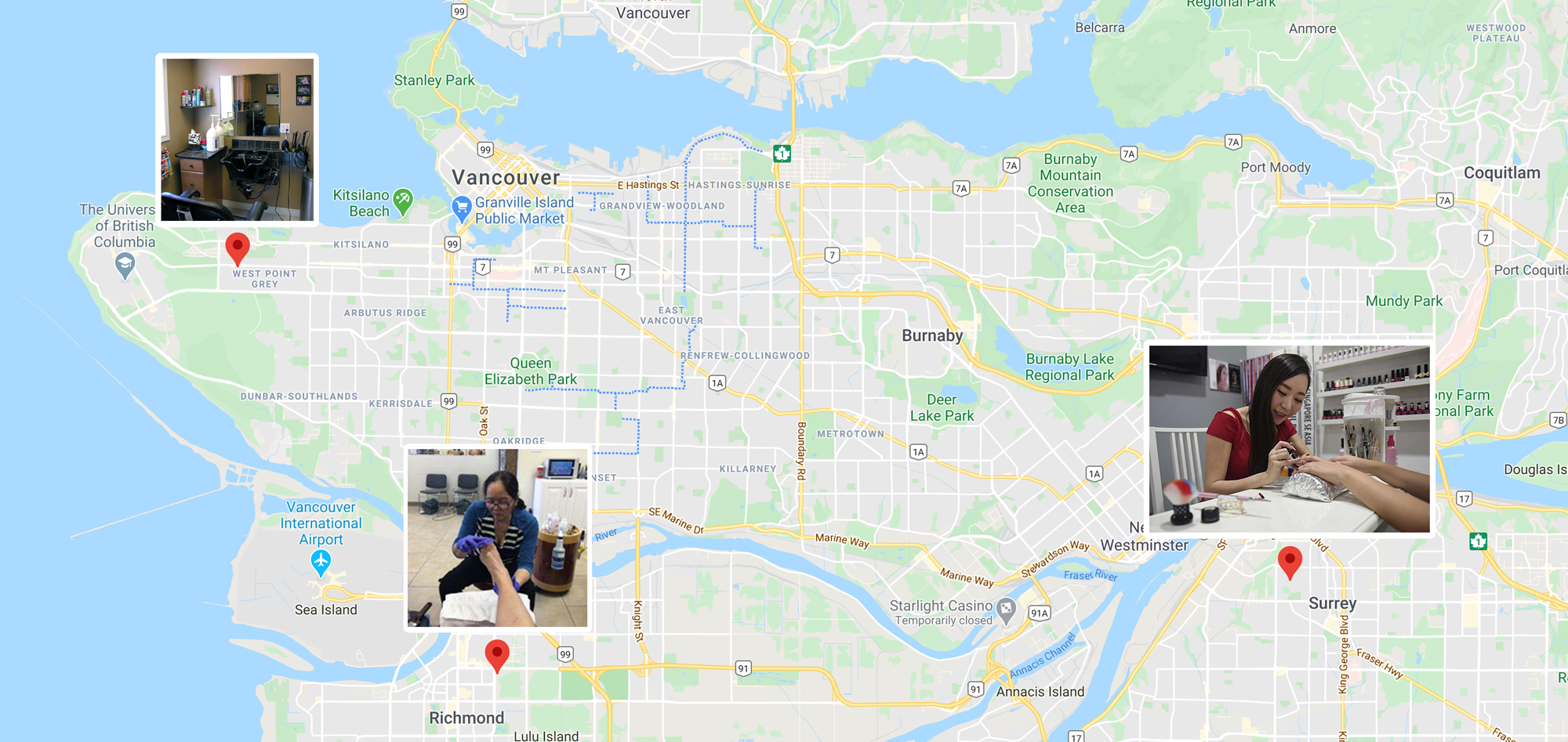
Identifying Target Users
One of my teammates’ has a neighbor who does tailoring from her home. This sparked the idea of finding more like her who conducted business out of their homes, and through the suggestion of one of our mentors, we searched Craigslist. We later found that Craigslist was a host of online beauty services and many of whom worked from home.
Most of the beauticians we spoke with were seasoned immigrants who had been living in Canada for years and feel stuck because they weren’t passionate about the full-time jobs they had. These beauticians often began their side businesses doing hair and makeup for their family and friends and gained more clients through word of mouth.
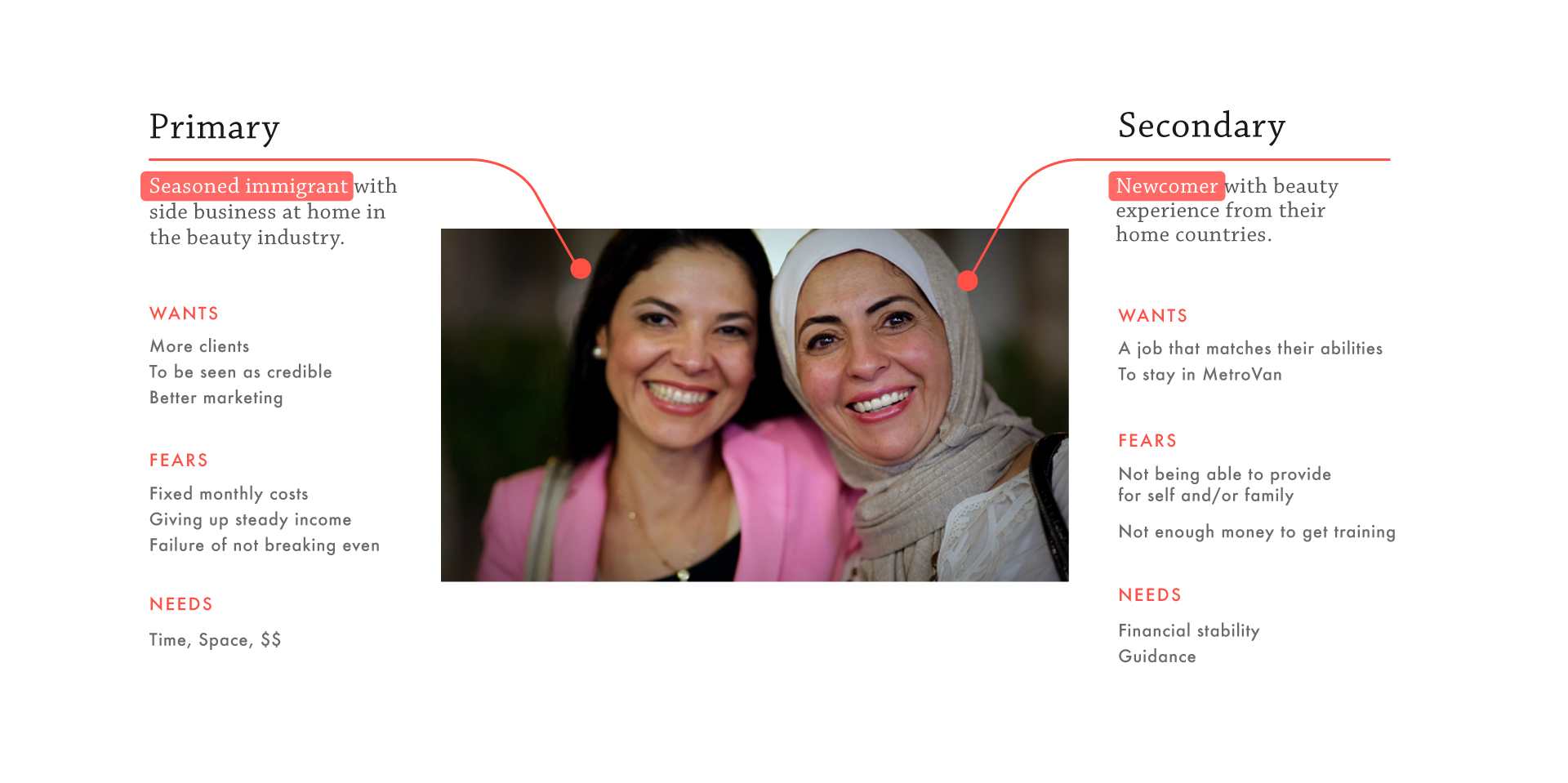
We called a few people on Craigslist who we identified as newcomers but did not further our interviews with them mainly due to language barriers. Through primary and secondary research, we learned that newcomers often come with beauty skills from their home countries, but struggle to find a suitable job to apply them because of insufficient qualifications.
Competitive Analysis
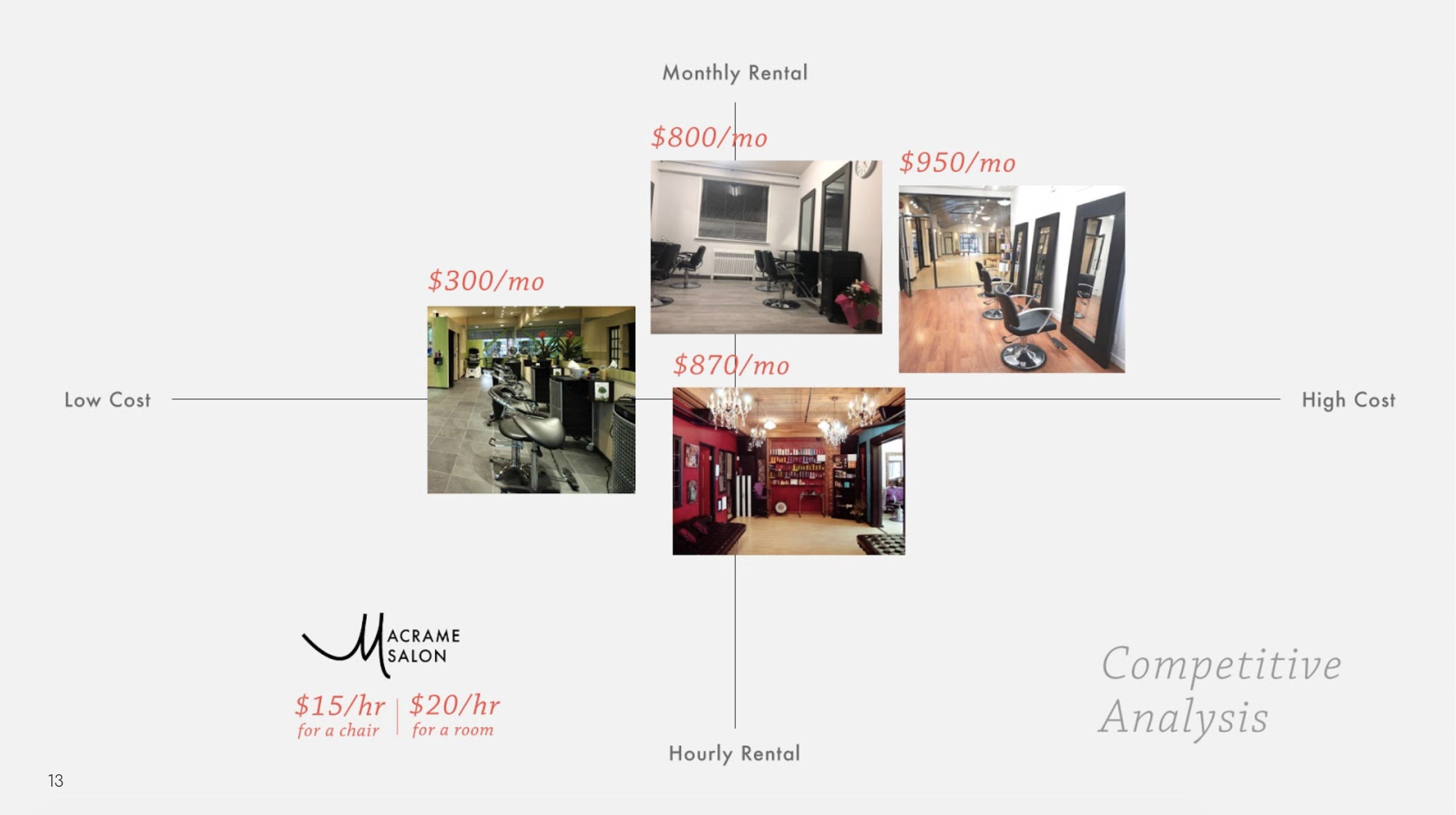
Designing the System
The Experience
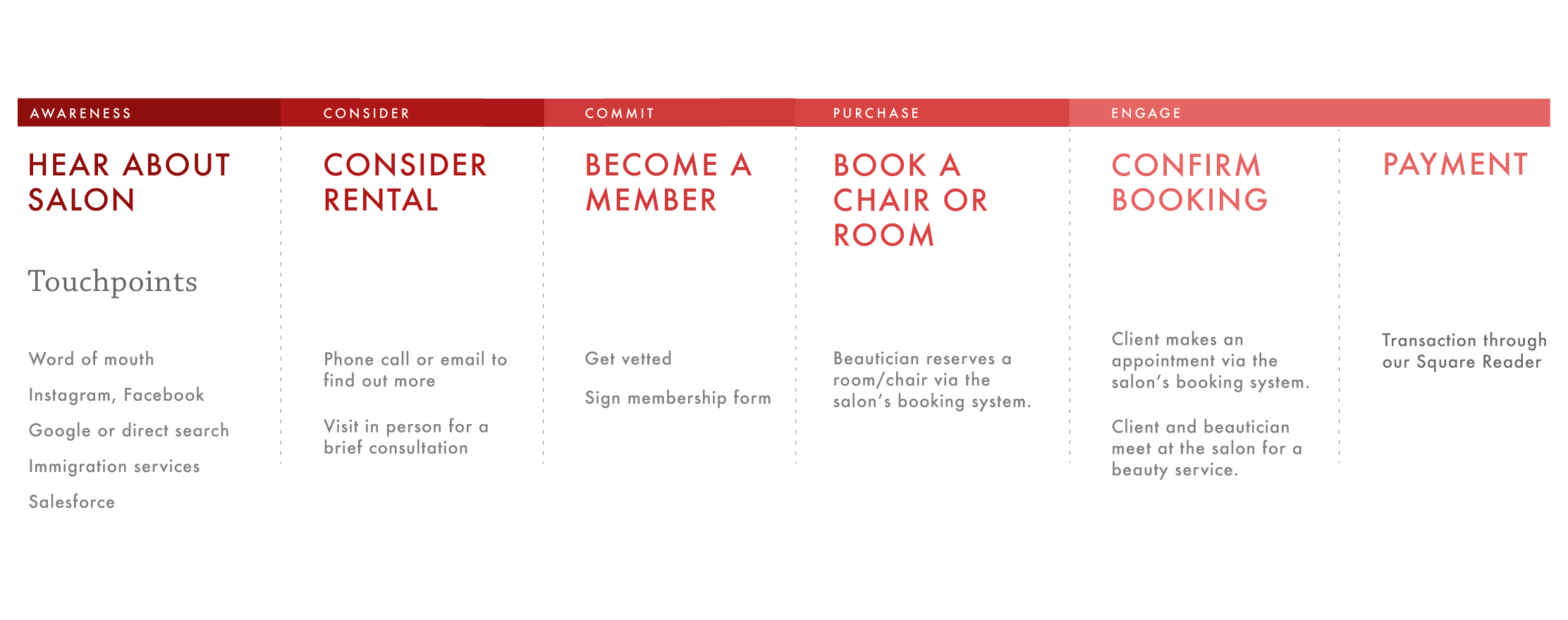
The Booking System
From ethnographic research, my teammates and I learned that the beauticians used texting as a method to secure appointments with their clients, but texting isn’t a sustainable method with increased clients. The online booking platform aims to improve the booking experience between the beauticians and their clients by matching available rooms and chairs to a beauticians’ availabilities.
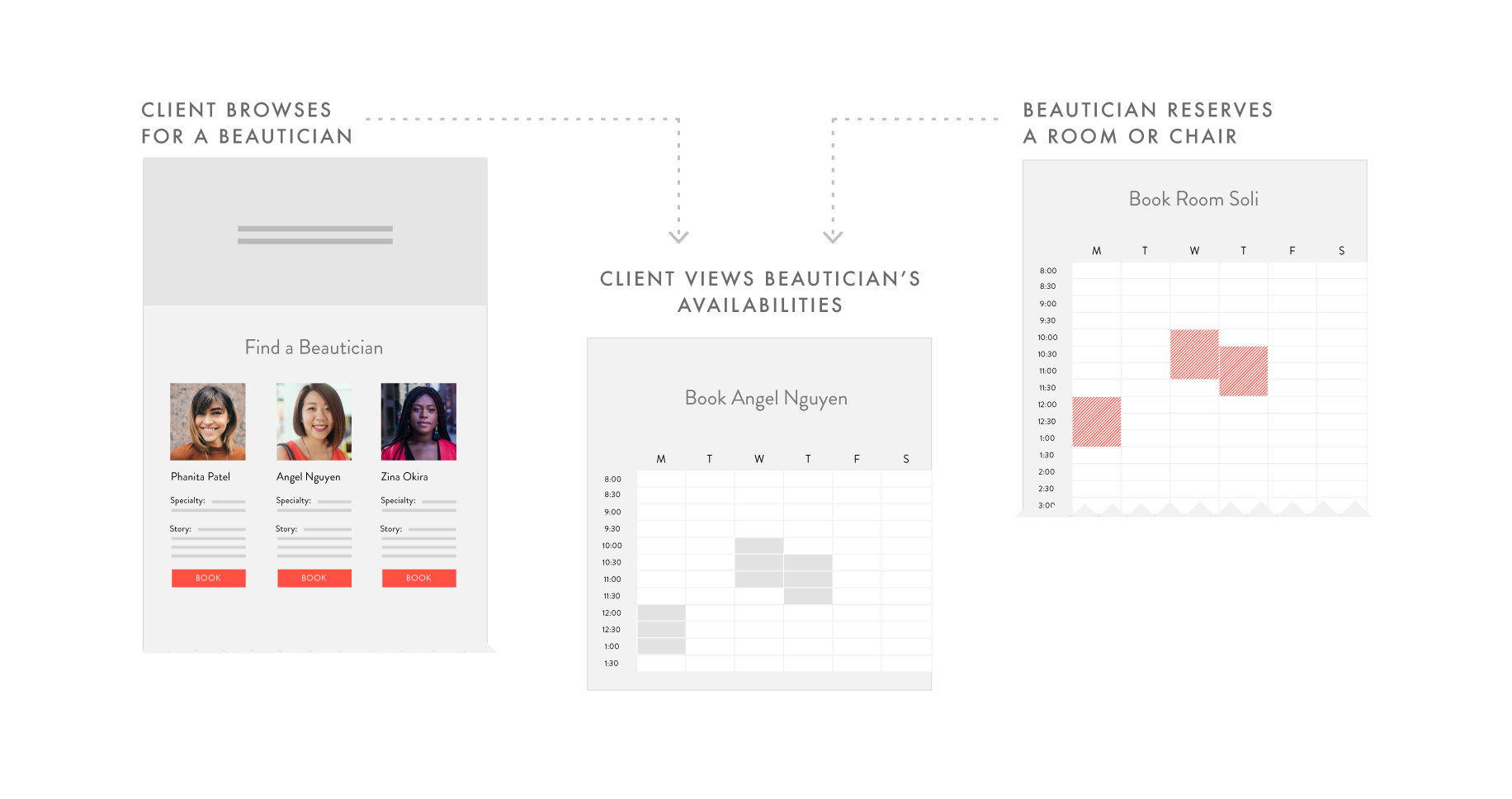
The Referral System
One of Macrame salon’s strengths is that it operates as a referral machine. The beauticians expressed wanting better marketing, so being part of a community and in a commercial space helps beauticians meet new clients. Macrame Salon can also help the beauticians create social media content, like YouTube video ‘how-to’s’. In this way, we promote the beauticians as well as our salon.

Next Steps
Location
Our next steps in scaling are linked to the location choice of our salon. We’ve also looked into emptying mall spaces as a way to reduce our space leasing costs. There are certain criteria the location must meet that include:
